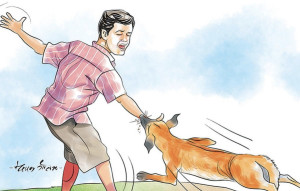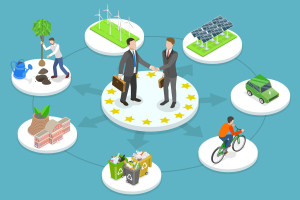Columns
COP25 in Spain needs to encourage increased climate action
It must generate implementation guidelines for climate issues to meet the commitments made..jpg&w=900&height=601)
Sneha Pandey
The 25th Conference of Parties (COP25) to the United Nations Framework Convention on Climate Change (UNFCCC) has started in Spain this Monday and negotiations are set to continue for the next two weeks. Countries from all over the world have gathered again to fulfill the mandate of the UNFCCC to ‘prevent dangerous anthropogenic interference with the climate system’. This year’s COP, like the three before it, builds on the progress of the 2015 Paris Agreement.
What is COP and what happened during COP21 in Paris?
COP is the ‘supreme decision-making body of the UNFCCC, where decisions are made by forging consensus among all member nations. Among the more famous COPs over the year is COP21, where the historic Paris Agreement was signed. 187 of the 197 parties of the UNFCCC have committed to abide by the contents of this Agreement, which builds on the efforts of the Convention by bringing nations together to pursue common urgent climate agendas.
The Paris Agreement famously calls for countries to hold 'global temperature rise this century well below 2 degrees Celsius above pre-industrial levels and pursue efforts to limit the temperature increase even further to 1.5 degrees Celsius’. In addition to such mitigation commitment, the Paris Agreement also calls for countries to adapt to the adverse impacts of climate change and make sure that finance- and capacity building-support is consistently available for countries with constrained capacities—like Least Developed Countries (LDC) and Small Island Developing States (SIDS).
To ensure effective compliance and implementation, countries were allowed to set their own climate targets in the Paris Agreement, which are communicated in documents known as Nationally Determined Contributions (NDC). These NDCs are revised every five years and the Agreement mandates that each revision must entail an increase in the climate fighting ambitions of the country. The next NDC to be submitted to the international community is in 2020.
What happened post-Paris?
After 2015, in the last three years, nations worked together to create the Paris Rulebook—a document that outlines how countries can plan, implement and review their NDC commitments. This was done with an understanding that without such consistent global guidelines, there would be no way to take stock of the collective progress made.
The Paris Rulebook was finalised in Poland last year with implementation guidelines agreed upon for most issues including regular communication, review and stock-take of mitigation, adaptation progress; growth and alignment of investments; and loss and damage (L&D).
However, despite finalising this rulebook, COP24 in Poland was deemed only somewhat successful: It was unable to produce guidelines for all issues and even where these guidelines were produced, they were not all satisfactory. It was also unable to get all nations to adopt the 2018 IPCC Special Report on Global Warming of 1.5 Degrees Celsius—a report that emphasises the importance of keeping temperature rise below 1.5 degrees Celsius above pre-industrial levels to avoid catastrophic impacts. This endorsement was blocked, unsurprisingly, by a couple of major oil-producing countries, including the USA. All in all, these led to the COP24 conference to be perceived as only moderately successful.
What needs to be achieved in Spain this year?
Some outstanding and critical issues will need more deliberation in Spain this December. For some of these issues no implementation guidelines have been produced, for others, the current commitments made or actions taken have been deemed inadequate.
Transparency: To ensure that nations are enacting the commitments made in their NDCs, it is important to establish a transparent system to monitor, report and verify mitigation- and financial support-actions promised by countries. It is believed that the fear of public naming and shaming through this mechanism forces countries to meet their commitments. It was decided that nations had to submit their transparency reports every two years, starting 2024. However, it was also recognised that not all countries—especially LDC and SIDS—may have the capacity to meet such stringent criteria and deadlines. There was a general disagreement regarding how much flexibility should be given to such countries, which has stalled progress in producing an implementation guideline.
Carbon markets: Since greenhouse gases have such potent climate-altering ability, they are currently tracked, traded and regulated in the carbon market. By establishing such markets, regulators ensure that emissions can be driven down in places where it is cheapest to do so. More than half of the NDCs submitted mention using these markets to help meet their mitigation targets. In COP24, the international community could not reach an agreement regarding the implementation guidelines of this market, i.e. what crediting mechanism is appropriate for such schemes; how to prevent double-counting (where both buyer and seller would claim emissions reductions for the same project); how much of the revenue from carbon trading should go the Adaptation Fund for developing countries and so on.
Loss and Damage: No degree of adaptation will completely avert all the impacts of climate change and some form of loss and damage to lives, livelihoods, property and culture is bound to occur. Most cases of such L&D happen to poor communities that live in close proximity to the natural environment. However, to this day, no separate funds have been allocated to address such climate impacts on vulnerable countries, communities and ecosystems. Developed countries are adamant that adaptation and L&D are similar enough that they do not warrant different finance. This year, the 2013 Warsaw International Mechanism on L&D (WIM) has undergone a review of its mandate. In particular, this analysis judged WIM’s ability to provide resources and support that vulnerable communities need to address such L&D.
Mitigation: The 2019 Emissions Gap Report warns that we are on the 'brink' of failing to keep warming limited to 1.5 degrees Celsius. It also states that the current NDC commitments are nowhere adequate enough to save our socio-environmental systems. In September’s UN Climate Action Summit in New York, many nations pledged to increase mitigation commitments in their 2020 NDCs—however none of these were the world’s biggest polluters. In this year’s COP, it is crucial that these nations step up their ambition.
Financial support: Without financial support, it is clear that developing countries will not be able to mitigate, adapt or build resilience to climate change. Despite advanced economies commitment to jointly mobilise USD $100 billion per year by 2020 to meet these needs, funds have not even reached the $10 billion mark. Countries like the USA, Australia and Saudi Arabia, that have most benefited from historical emissions, have shown no interest in contributing to the fund. In Spain this year, increased ambition is needed from these countries to meet the commitments made.
***
What do you think?
Dear reader, we’d like to hear from you. We regularly publish letters to the editor on contemporary issues or direct responses to something the Post has recently published. Please send your letters to [email protected] with "Letter to the Editor" in the subject line. Please include your name, location, and a contact address so one of our editors can reach out to you.




 7.12°C Kathmandu
7.12°C Kathmandu.jpg)















